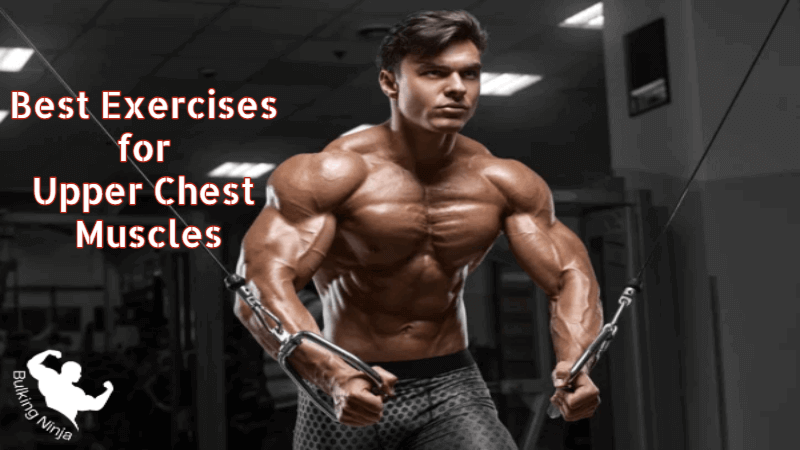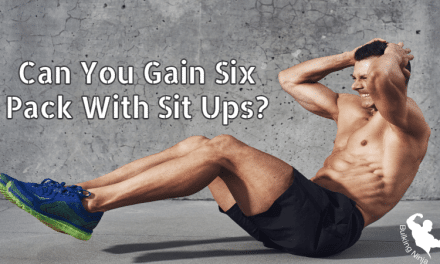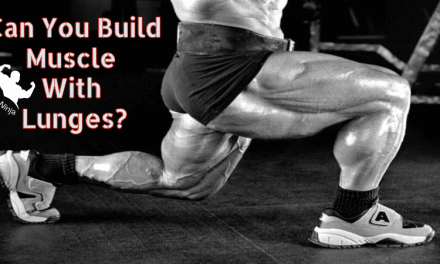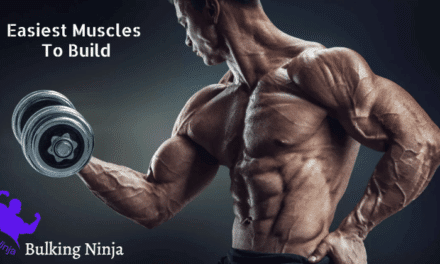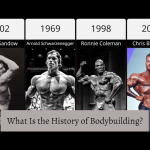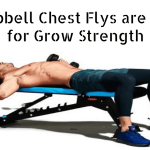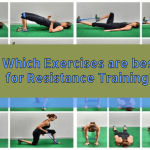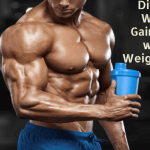Building a well-rounded and chiseled upper body often requires targeted exercises that focus on specific muscle groups. While many fitness enthusiasts prioritize overall chest development, the often-neglected area of the upper chest is crucial for achieving a balanced and sculpted physique.
Whether you are a seasoned weightlifter looking to fine-tune your upper body or a beginner striving for a more defined chest, incorporating the best exercises for upper chest muscles into your workout routine is a fundamental step towards achieving your fitness goals.
In this comprehensive guide, we will delve into some of the most effective and proven upper chest exercises tailored to specifically target the upper chest muscles, helping you enhance muscle definition, strength, and overall chest aesthetics.
Table of Contents
Best Exercises for Upper Chest Muscles
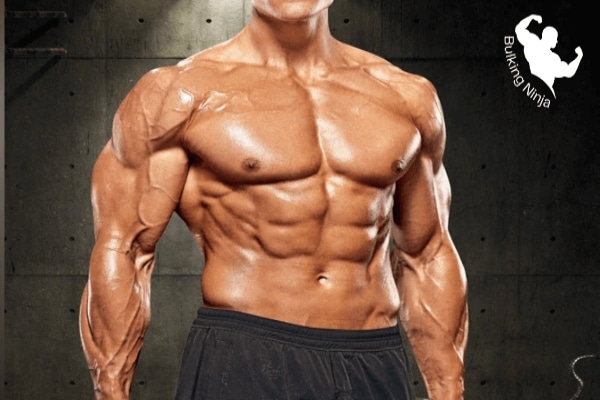
When it comes to achieving a well-defined upper chest and enhancing your upper body strength, one can’t overlook the role of upper chest muscles in defining this region of your anatomy. Bodybuilders and powerlifters have long debated the best exercises to sculpt the upper chest, and the bench press has emerged as a defining choice.
These upper chest exercises not only contributes to your upper body strength but also promotes muscular aesthetics sought after by those striving for a balanced, well-proportioned physique. Recent studies on perceived attractiveness have revealed that a broader chest and a lower waist-to-chest ratio are key physical features that appeal to both males and beauty standards, underlining the significance of working on your upper chest muscles.
Moreover, building the strength of your upper chest muscles isn’t just about appearances; it’s about the practical support they provide for everyday tasks like pushing doors or wielding loppers to cut tree branches. Whether your goal is to have sculpted pecs or simply to enjoy quality time playing with your kids on the living room floor, these upper chest exercises offer a path to achieving both strength and aesthetics.
What are The Muscles Of the Chest?
The chest comprises three main muscles:
Pectoralis Major
Pectoralis Minor
Serratus Anterior
Pectoralis Major
The pectoralis major is essential for devising effective exercises targeting the upper chest muscles. Comprising the clavicular head and the sternocostal head, this unique muscle operates in an antagonistic manner, creating a harmonious balance where one head contracts while the other relaxes.
The clavicular head specifically plays a vital role in flexing the humerus and bringing the arm inward towards the body’s midline, facilitating movements like internal rotation. On the other hand, the sternocostal head contributes to lowering the arm from a forward position and supports horizontal adduction, simulating the action of a warm bear hug.
By incorporating exercises that engage both heads of the pectoralis major, one can achieve comprehensive muscle development and strength gains, leading to a well-sculpted and powerful upper chest.
Pectoralis Minor
The pectoralis minor is crucial for a comprehensive workout regimen. This muscle not only stabilizes the shoulder blade by pulling it forward and downward against the rib cage, promoting a stable and controlled protraction of the shoulder blade, but it also contributes to enhancing overall shoulder stability and facilitating smooth respiration.
Incorporating exercises that engage and strengthen the pectoralis minor can significantly improve the stability and functionality of the upper chest, allowing for a more well-rounded and effective upper body workout.
Serratus Anterior
The serratus anterior muscle, renowned for its sawlike origination on the outside front of the first through eighth ribs. This muscle extends and terminates on the medial border of the shoulder blade, playing a pivotal role in pulling the shoulder blade around the ribs to prevent scapular winging and ensuring stability during various pushing movements.
By incorporating exercises that target and strengthen the serratus anterior, individuals can enhance the stability and functionality of the shoulders, leading to more effective and well-rounded upper chest workouts. Read more about Benefits of Sit ups.
What are Best Exercises for Upper chest Muscles?
Here we are discuss some best and easy exercises for upper chest muscles.
Push-ups
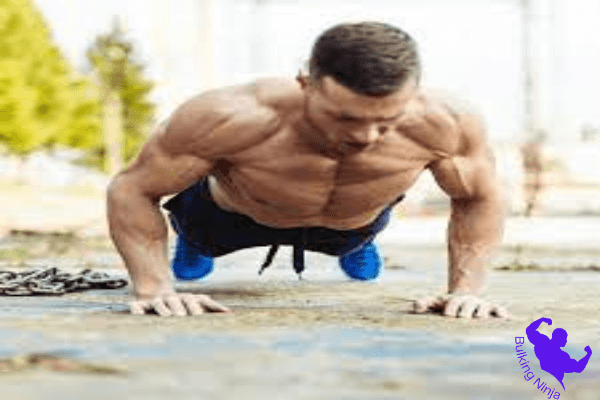
Equipment required: none
How to do effective Push ups for gain upper chest muscles?
- To target your upper chest muscles effectively, begin by assuming the high plank position, ensuring your hands are slightly wider than your shoulders and your legs are fully engaged with your quads and hamstrings.
- Focus on maintaining a straight spine and a tight core as you lower your chest towards the ground by bending your elbows at a 45-degree angle.
- Throughout the exercise, it’s crucial to ensure that your body is in perfect alignment, from your head to your heels, to provide the necessary support and maximize the effectiveness of the workout.
- Press your chest away from the ground, engaging your chest muscles and challenging yourself with each repetition.
- For an added challenge, consider trying the decline pushup by placing your feet on an elevated surface such as a bench or table, intensifying the workout and targeting your upper chest muscles even further.
- Complete 8-12 repetitions in 3 sets, and remember to keep your hips in line with your shoulders and ankles for optimal results.
You can start your fitness journey with important types of pushups like Handstand push ups, Wall pushups, one-Arm pushups, Standard Pushups, Inline pushups, Knuckle Push ups, Clapping Push ups, Diamond Push ups, Fingertip Push ups.
Resistance band pullover
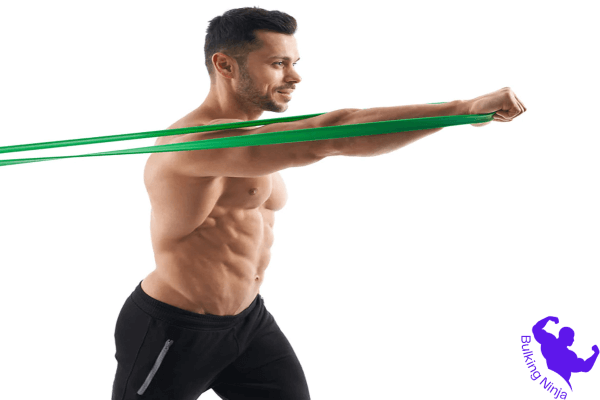
Equipment required: resistance band
- To effectively target your upper chest muscles, begin by anchoring the band securely at a solid point and lying on your back with your head towards the anchor point, ensuring the band is positioned about 1-2 feet higher than your head.
- Grasp the band overhead, maintaining a slight tension, with your thumbs pointing towards the sky and your palms facing away from each other, engaging the muscles of your upper chest and arms.
- With a focus on maintaining a tight core and straight elbows, pull the band towards your hips, emphasizing control and smooth movement throughout the exercise.
- Slowly return to the starting position, allowing for a complete range of motion and ensuring the targeted muscles are fully engaged during both the pulling and returning phases.
- Incorporate 3 sets of 8-12 repetitions to maximize the effectiveness of this exercise, promoting muscle development and strength in the upper chest area.
Cable crossover
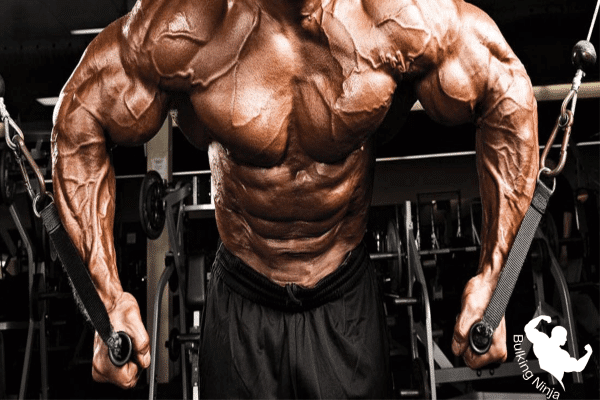
Equipment required: cable machine or a resistance band
- Begin your upper chest workout by standing at a comfortable distance from a high pulley cable machine or use a versatile resistance band anchored overhead to provide consistent resistance throughout the exercise.
- Opt for a light to moderate weight on the cable machine or resistance band; this choice strikes a balance between providing a challenge to your upper chest muscles while ensuring your success in completing the exercise with proper form.
- To engage your upper chest effectively, grasp the handles (or the ends of the band) and take a step forward with one foot.
- Maintain the right amount of tension and control on the handles to keep them in front of your chest, ensuring your upper chest muscles remain actively involved.
- As you initiate the exercise, bring the handles down and forward across your body, targeting your upper chest at approximately belly button level. This movement can also involve crossing the hands, adding emphasis to the serratus anterior muscles, further enhancing your upper chest development.
- During the exercise, remember to hold the position for a brief moment to maximize the muscle contraction in your upper chest, then execute a slow return to the starting position, and finally repeat the movement for optimal results.
A recommended workout routine involves 3 sets of 8–12 repetitions for each exercise.This approach ensures you’re working your upper chest muscles effectively without overexertion. - By incorporating these techniques and exercises with the high pulley cable machine and resistance band, you can achieve significant development in your upper chest muscles, contributing to a well-rounded and sculpted chest.
Decline bench press
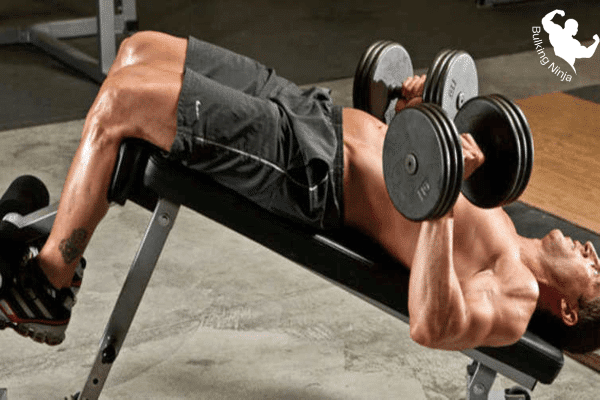
Equipment required: barbell or dumbbells, decline bench
- Begin by lying on your back on the decline bench, ensuring your knees are bent and ankles are secured behind the ankle
- Begin by lying on your back on the decline bench, ensuring your knees are bent and ankles are secured behind the ankle rests to establish a stable foundation for the exercise.
- Grasp the barbell with your thumbs wrapped around it, while keeping your palms facing towards your feet. This grip ensures stability and control throughout the exercise.
- Press your arms straight to lift the weight off the rack, positioning it above your lower chest to upper abdomen region. This proper positioning effectively targets the upper chest muscles for maximum engagement.
- Execute the exercise by slowly bending your elbows to lower the weight towards your chest, maintaining a controlled and deliberate movement aimed at the area around your nipples. This controlled descent optimally activates the upper chest muscles.
- Remember to pause, then press the weight back to the start position to complete each repetition with precision and intention, ensuring optimal muscle activation and growth.
- To maximize the benefits, aim to complete 3 sets of 8–12 repetitions during each workout session. This approach allows for targeted muscle development without compromising form or risking overexertion.
- Incorporating the decline bench press into your upper chest workout routine effectively targets the upper chest muscles, contributing to a well-rounded and sculpted chest over time. By following these expert tips, you can ensure an efficient and effective upper chest workout session.
Flat bench press
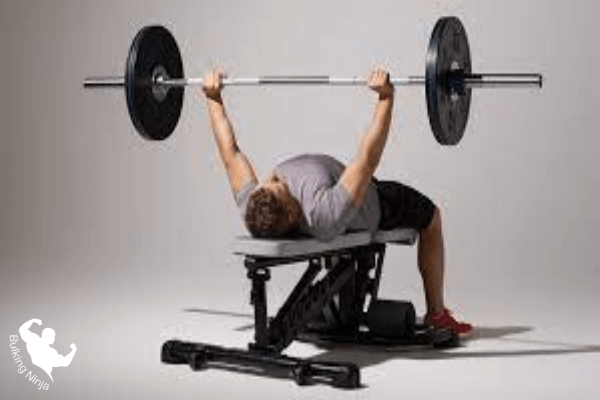
Equipment required: barbell or dumbbells, flat bench
- Lie on your back on the bench with your knees bent and feet flat on the floor, ensuring a stable foundation for the exercise.
- Grasp the barbell with your thumbs wrapped around it and your palms facing your feet, ensuring a secure grip that enables precise control and stability during the exercise.
- Press your arms straight toward the ceiling to lift the weight off the rack, maintaining a controlled movement that effectively engages the upper chest muscles.
- Move the weight over your chest level for optimal muscle activation and growth, ensuring the exercise targets the upper chest area comprehensively.
- Initiate the descent by slowly lowering the weight to your chest at a 45-degree angle with your elbows, ensuring the bar is approximately in line with your nipples for precise muscle targeting.
- During the exercise, remember to pause and then press the weight back to the start position to complete each repetition with controlled precision, maximizing the benefits for your upper chest muscles.
- It’s essential to maintain a flat back and ensure proper control of the weight throughout the exercise. Keep your neck neutral to avoid any excessive strain that may hinder your progress.
- For added safety and assistance, it’s recommended to enlist the help of a spotter, ensuring you can execute the exercise efficiently and without compromising your safety.
By incorporating these techniques into your upper chest workout routine, you can achieve significant muscle development and strength, fostering a well-defined and sculpted upper chest over time. Read more about Benefits of Jumping Jacks.
Incline bench press
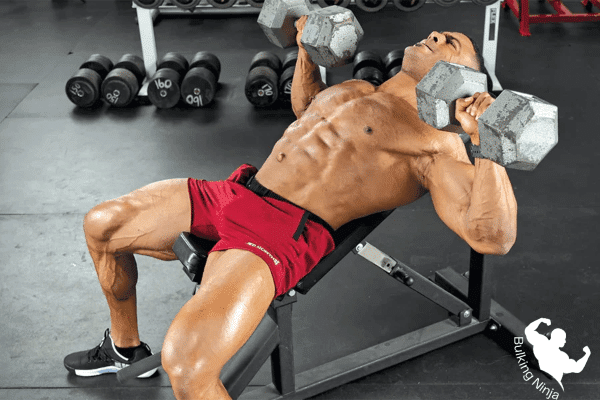
Equipment required: barbell or dumbbells, incline bench
Begin by lying on your back on the incline bench, ensuring your knees are bent and your feet are flat on the floor for stability during the exercise.
Grasp the barbell with your thumbs wrapped around it and your palms facing your feet to establish a secure grip, enabling controlled and precise movements throughout the exercise.
Press your arms straight toward the ceiling to lift the weight off the rack, ensuring a steady and deliberate movement that effectively engages your upper chest muscles.
Position the weight strategically above your collarbone to ensure optimal muscle activation and growth, targeting the upper chest region comprehensively.
Control the movement by slowly lowering the weight to your chest along a specific line, focusing on the mid-chest area, just above your nipples, to maximize the impact on the upper chest muscles.
During the exercise, pause briefly, then press the weight back to the start position for each repetition, ensuring a controlled and precise movement pattern.
For a comprehensive upper chest workout, aim to complete 3 sets of 8–12 repetitions, ensuring proper form and muscle engagement without overexertion.
Additionally, it’s highly recommended to have someone spotting you, ensuring safety and assistance during the exercise. By following these expert techniques, you can effectively target and develop your upper chest muscles, contributing to a well-defined and sculpted chest over time.
Close-Grip Bench Press
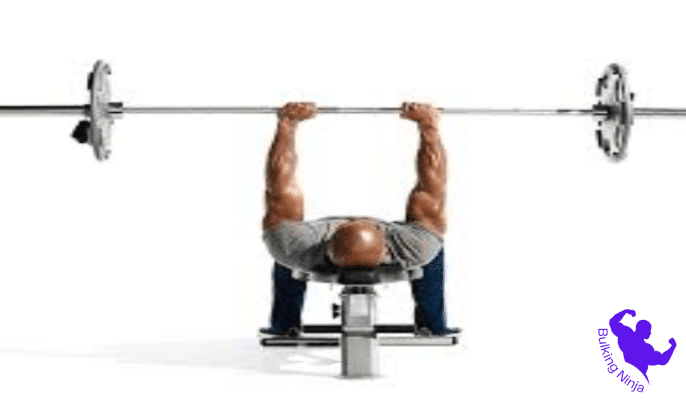
Equipment required: barbell or dumbbells, bench
- Benching remains the bread and butter of chest day, serving as a fundamental aspect of any comprehensive upper body workout routine.
- Incorporating weights and high-value exercises like the close-grip bench press can significantly contribute to building the upper chest area, fostering comprehensive muscle development and strength.
- Hands positioned with a narrow grip during the close-grip bench press allow for increased activation of the upper chest muscles, leveraging the motion at the shoulder for targeted muscle engagement.
- To begin, ensure proper setup at the bench press station with your eyes aligned directly underneath the barbell and your feet firmly planted on the floor for stability throughout the exercise.
- Grip the barbell firmly and unrack it from the station, pulling it straight out until your arms are extended directly over your shoulders to initiate the exercise movement.
- Lower the bar towards your torso while maintaining controlled movements and ensuring the bar makes proper contact with your chest for optimal muscle engagement.
- Implement the coach’s tip, allowing the bar to make contact with your torso slightly lower than you would for a normal-grip bench press, ensuring comprehensive activation of the upper chest muscles.
- Aim to complete sets and reps as part of your routine, striving for consistent progress and muscle development over time.
- By integrating the close-grip bench press into your upper chest workout regimen, you can effectively target and develop your upper chest muscles, contributing to a well-defined and sculpted chest area.
Guillotine Press
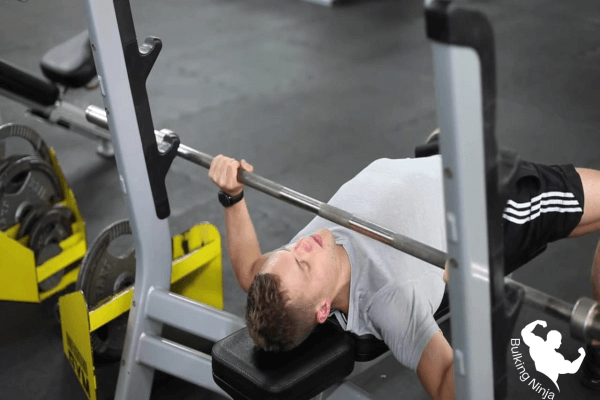
- Glance at this unique exercise that specifically targets the upper chest area, offering an intense stretch and limited involvement of the triceps, ensuring comprehensive muscle engagement and growth.
- Begin by unracking an empty or lightly-loaded barbell while lying on a flat or slightly inclined bench, ensuring a stable and secure foundation for the exercise.
- Lower the weight slowly downwards towards your neck or clavicle while ensuring your elbows are flared, allowing for optimal muscle activation and engagement during the movement.
- Rest momentarily at the bottom position before pressing the weight back up, focusing on attempting to bend the bar into a U-shape, facilitating a more effective and targeted workout for the upper chest muscles.
- Be mindful to stop if you experience any noticeable shoulder discomfort, ensuring you prioritize safety and avoid any potential injuries during the exercise.
- An essential Coach’s Tip is to start with very, very light weights, gradually progressing to more challenging loads as your strength and muscle development improve.
- For a comprehensive upper chest workout, consider incorporating the guillotine press into your routine, as it can effectively stimulate muscle activation and growth, fostering a well-defined and sculpted upper chest over time.
Upper Chest Warm-Up
While enthusiasts may be tempted to jump right into their workouts and find their groove naturally, it is crucial to acknowledge the significance of a dedicated and well-structured chest session to avoid potential setbacks and ensure optimal muscle engagement and growth. Understanding the repercussions of initiating a workout session with a cold body, it becomes apparent that a well-planned warm-up routine acts as a preventive recipe against potential workout disasters.
Recognizing the prevalence of common ailments such as the “bench presser’s shoulder,” it’s essential for gym rats to comprehend the importance of mitigating excessive pressing during their workout routines. Addressing the link between the potential result of soft tissue aggravation in the pec minor, enthusiasts should prioritize the implementation of proper warm-up techniques to ensure a critical safeguard against workout-related aches and pains.
Understanding the significance of preventive measures, particularly in the context of upper chest muscle development, underscores the importance of incorporating a warm-up routine into your workout regimen, fostering not only improved muscle engagement but also a proactive approach to maintaining long-term workout sustainability and success.
Frequently Asked Questions
How do you work out your upper chest?
You can work out your upper chest through exercises such as the incline bench press, incline dumbbell press, incline push-ups, and incline flyes.
How do you gain upper chest fat?
Gaining fat in a specific area, such as the upper chest, is not possible as fat distribution is largely determined by genetic and hormonal factors. Overall body fat can be gained through excessive calorie intake, leading to an increase in overall body fat percentage.
Should I work my upper chest?
Working your upper chest is beneficial for achieving a well-rounded, balanced chest development. Including exercises that target the upper chest can help create a fuller, more defined chest appearance.
Is upper chest hard to grow?
Yes, the upper chest can be more challenging to develop compared to other areas of the chest. It often requires targeted exercises and a focus on proper form to effectively stimulate muscle growth in this region.
Which part of chest is most important?
Each part of the chest plays a significant role in overall chest development and aesthetics. However, the lower chest is often considered crucial for achieving a well-rounded and balanced chest appearance, as it contributes to the overall fullness and shape of the chest.
Conclusion
The upper chest muscles play a crucial role in achieving a well-defined and sculpted chest. Through a comprehensive understanding of the best exercises targeting the upper chest, such as the incline bench press, incline dumbbell press, and incline push-ups, individuals can effectively enhance their upper chest development.
By incorporating these exercises into a well-rounded workout routine and ensuring proper form and technique, enthusiasts can foster significant muscle growth and achieve their desired chest aesthetics. Remember, consistency and dedication are key to achieving optimal results. So, incorporate these exercises into your workout regimen and witness the transformation of your upper chest for a more sculpted and defined physique.”
